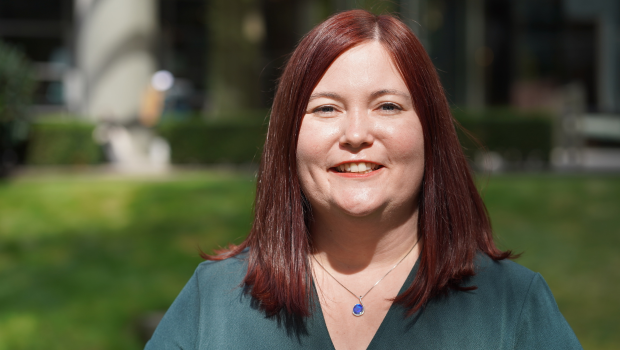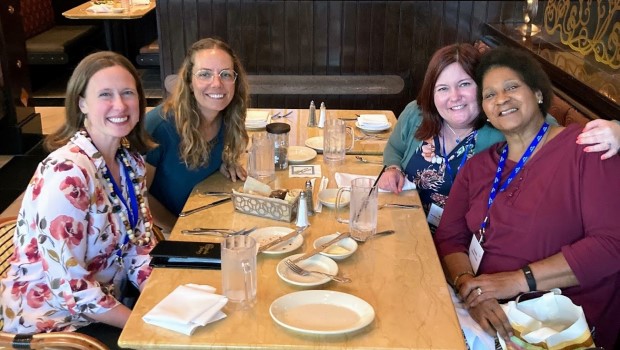5 insights on patient and family engagement

Kelsey Stefanik-Guizlo shares what she’s learned about strategies to meaningfully engage patients and families in transforming care
By Kelsey Stefanik-Guizlo, MPH, a collaborative scientist with the Center for Accelerating Care Transformation (ACT Center) at Kaiser Permanente Washington Health Research institute
I first heard the phrase “nothing about me without me” years ago while working on patient education programs, and it really resonated with me. It came up it again last year when I was helping state primary care and behavioral health organizations in North Carolina develop a consumer engagement strategy as part of the Delta Center for a Thriving Safety Net.
A rallying cry that began in 1998 in relation to including patients and families in medical decisions, “nothing about me without me” has evolved into a central tenet of patient-centered care. It’s also a core principle in the Delta Center’s work to create more equitable health policies and care systems that better meet the needs of individuals and families. In order to provide equitable, patient-centered care, we must first learn what that care looks like to the people and communities we’re trying to reach. And to do that, we need to understand how best to engage patients and families in sharing their experiences and needs with us.
What does meaningful patient and family engagement look like?
A key focus area for the Center for Accelerating Care Transformation (ACT Center) is meaningfully engaging patients and families in our projects — and continuing to learn from those experiences to refine our long-term patient and family engagement strategy. In addition to helping our Delta Center partners around the country to develop their consumer engagement approaches, my work at the ACT Center includes partnering directly with patients in the Integrated Pain Management program.
Both experiences have taught me a lot about what it takes to do patient and family engagement well, including some specific things we can do as project partners to create a respectful and meaningful experience for the people who contribute their valuable time and knowledge to help transform care.
1. Invest time up front to get specific about what you want to learn from patients and families
Patient and family engagement will look different across projects, and that’s okay. The important thing is to be clear about what you want to learn from them and then to choose an engagement strategy that will best allow you to gather that information in a thoughtful way. For example, if you want to broadly understand the preferences of patients and families on virtual health care options, a survey could be a good option. To learn about people’s current experiences with a care process and their ideas about how it could be improved, you might consider a series of focus groups. If you’re looking to co-design tools and resources or address a complex policy, an ongoing advisory group may be the best approach.
Regardless of which method you choose, be sure to share what you’re hearing with the patients and family members who are participating. Reflecting your learnings back to participants builds trust and honors the time and expertise they contributed to your work. It can also give you an opportunity to double check your observations and learnings.
2. Prioritize diversity
It’s essential to ensure you’re hearing from a diverse group of patients and family members. Think about the specific groups of people you want to hear from and how to best reach them. In some cases, it could be through a partner organization that has deeper relationships than you do. For example, the Delta Center's Oregon team partnered with Coordinated Care Organizations and culturally specific service providers to conduct focus groups and interviews with people with lived experience in English and Spanish. These organizations already had strong relationships with patients and family members, and they were in a better position than the Oregon team to bring them together.
3. Take time throughout the project to build trust and good relationships
This work isn’t a box-checking exercise — it requires intentionality and time to do it well. For in-depth projects, especially those that will engage a group of patients and families over time, build in adequate staff time to start establishing relationships and trust up front. Be realistic about how long this will take as the project launches and evolves. This is especially important if you’re working with people who may have had negative health care experiences in the past. Give them time and space to share those perspectives and talk about their goals for participating in the project. This can help you to understand where they’re starting from and to consider what additional information they might need to feel comfortable participating.
For example, before launching their advisory group, the Delta Center North Carolina team hosted a project meeting with prospective members to understand their goals and backgrounds. They also brought in state Medicaid leadership to give an overview of the policy issue the group would be addressing. This took extra time and effort — but it laid a strong foundation of trust and shared understanding that helped the project succeed. The team continued strengthening their relationships with advisory group members by giving people time to share their experiences in project meetings and using active listening skills.
4. Compensate people for their time
For in-depth or ongoing patient and family engagement, compensating participants for their time is essential. Compensation demonstrates that you recognize the value of their time and is critical from an equity perspective to ensure people from a variety of backgrounds are able to participate in the work.
Both the Delta Center North Carolina team and ACT Center’s Integrated Pain Management program pay consumers and family members to honor the deep expertise they bring to the projects, as well as the significant amount of time they contribute. A Delta Center North Carolina facilitator noted, “Too often, consumers are considered volunteers. There’s nothing in it for them other than the ‘feel good’ part. We worked out an opportunity for folks to get paid for their time to make sure we were all sitting around the table, and we were all getting paid for it, which is important and meaningful.”
5. Be willing to make changes based on patient and family input
When you’re asking for input from patients and families, you need to be willing to adjust your approach based on that input, even if it differs from your original plans. Being willing to change course demonstrates respect to your patient and family member partners, builds trust, and honors their lived experience.
In the Integrated Pain Management program, we’ve co-designed a number of tools and resources with patient partners and have adjusted our approach based on their guidance. For example, as we were writing a toolkit for people who living with long-term pain, they shared that the term “chronic pain” was off-putting because it made it sound like the pain would never go away and couldn’t be managed. As a result of this feedback, we decided to instead use “persistent pain” in the toolkit and to explain the reasoning for our word choice up front in the document. This change made for a better final product and is something we wouldn’t have known about without the valuable input of our patient partners.


